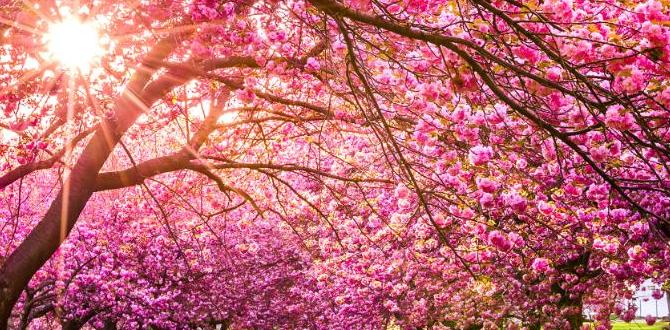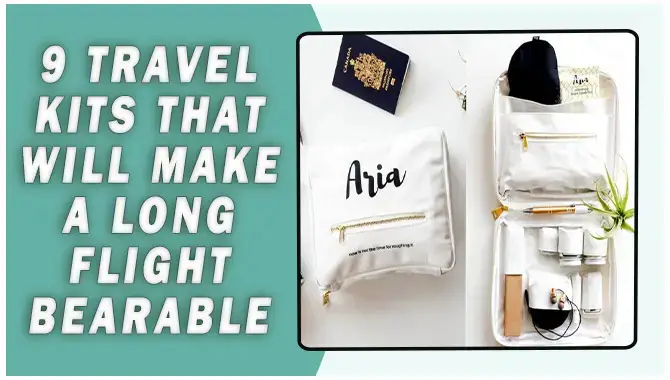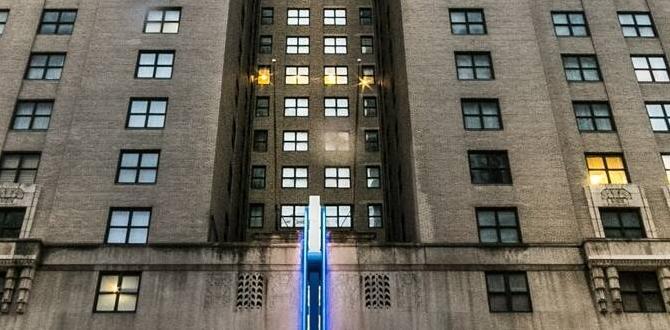The turquoise waters and lush green islands of Fiji beckon backpackers seeking paradise without breaking the bank. Discover the top exotic islands perfect for budget travelers, offering incredible adventures, unique culture, and breathtaking scenery. This guide simplifies your planning to ensure an unforgettable Fijian experience.
Dreaming of Fiji? Those postcard-perfect islands are more accessible than you might think, even on a backpacker’s budget. Planning a trip to Fiji can sometimes feel overwhelming, especially when you’re trying to find those hidden gems that offer amazing experiences without emptying your wallet. Don’t worry, fellow travelers! I’ve got you covered. We’re going to explore some of the most incredible, exotic islands in Fiji that are tailor-made for backpackers. Get ready for an adventure packed with stunning beauty, vibrant culture, and memories you’ll cherish forever. Let’s dive into the essentials for your Fijian escape!
Why Fiji is a Backpacker’s Paradise
Fiji, an archipelago of over 300 islands, is renowned for its friendly culture, vibrant coral reefs, and diverse landscapes. For backpackers, it offers a unique blend of adventure and relaxation. While some islands cater to luxury resorts, many others provide affordable accommodation options like hostels and guesthouses. The “Fiji Backpacker” experience often involves staying in the Mamanucas or Yasawas, islands famous for their stunning beaches and authentic Fijian hospitality.
The allure lies in the sheer variety. You can be snorkeling in crystal-clear waters one day, hiking to a waterfall the next, and experiencing a traditional Kava ceremony in the evening. It’s a destination that truly offers something for everyone, from the thrill-seeker to the relaxation enthusiast.
Understanding Fiji’s Island Groups for Backpackers
Fiji is broadly divided into several island groups, each offering a distinct experience. For backpackers, understanding these groups is key to choosing the right islands for your adventure:
Mamanuca Islands: Closest to the mainland (Denarau), these islands are easily accessible and famous for their beautiful beaches, excellent surf breaks, and clear lagoons. They are popular and can be a bit busier, but offer a great introduction to Fijian island life.
Yasawa Islands: Stretching northwest of the Mamanucas, the Yasawas are more remote, offering a more rugged and authentic backpacker experience. Expect stunning scenery, excellent diving and snorkeling, and a more intimate feel with local villages. This is where many backpacker resorts are concentrated.
Viti Levu: The largest island, home to the capital Suva and Nadi International Airport. While it has its own attractions, many backpackers use it as a transit point or to explore its interior jungles and waterfalls.
Vanua Levu & Taveuni: These are the second and third largest islands, respectively. They are less visited by typical backpackers, offering a more off-the-beaten-path experience with opportunities for diving (especially the Rainbow Reef near Taveuni) and exploring less-developed areas.
For the top exotic islands for backpackers in Fiji, our focus will predominantly be on the Mamanucas and Yasawas, as they offer the best combination of accessibility, affordability, and classic Fijian island beauty.
Top Exotic Islands for Backpackers in Fiji: Our Picks
Choosing where to go can be tough with so many beautiful options. Here are some of the top exotic islands in Fiji that consistently rank high for backpackers, offering a true taste of paradise on a budget.
1. Wayalailai Island (Yasawa Islands)
Wayalailai is a fantastic choice for backpackers looking for an authentic Fijian experience combined with stunning natural beauty. It’s part of the Yasawa chain, meaning it’s a bit more off the beaten path than the Mamanucas but absolutely worth the journey.
What makes it special for backpackers:
Authentic Village Life: Wayalailai is home to a vibrant local village, offering opportunities to interact with Fijian communities, learn about their traditions, and participate in cultural activities like Kava ceremonies. This immersion is a core part of the Fiji backpacker experience.
Beautiful Beaches and Snorkeling: The island boasts pristine beaches with soft white sand and crystal-clear waters perfect for swimming. The surrounding reefs offer excellent snorkeling directly from the shore, teeming with colorful marine life.
Affordable Accommodation: Resorts here are specifically geared towards backpackers, providing dorms and private bures (traditional huts) at budget-friendly prices. They often include meals in their packages, making budgeting easier.
Activities Galore: Beyond snorkeling and village visits, activities include kayaking, paddleboarding, jungle hikes to viewpoints, and traditional Fijian cooking classes.
Accessibility: While in the Yasawas, it’s relatively easy to reach with regular ferry services from the main island.
Getting there: Typically involves a scenic ferry trip from Denarau Marina.
Pro Tip: Engage with the local community respectfully. Learn a few Fijian phrases like “Bula” (hello) and “Vinaka” (thank you) – it goes a long way!
2. Nanuya Levu (Yasawa Islands) – The Blue Lagoon Area
Nanuya Levu is perhaps most famous for being the filming location of the 1980 movie “The Blue Lagoon.” While parts of the island are developed for tourism, it retains an incredibly wild and unspoiled feel, especially outside the main resort areas. It’s a prime example of an exotic Fijian escape.
What makes it special for backpackers:
Iconic Scenery: This island group is synonymous with Fiji’s dramatic landscapes – sheer volcanic cliffs meeting turquoise bays, lush tropical vegetation, and impossibly white beaches.
The Blue Lagoon: The actual “Blue Lagoon” area is a stunning sheltered bay with incredibly clear, calm waters, perfect for swimming and snorkeling.
Sawa-i-Lau Caves: A must-visit excursion from Nanuya Levu is to the Sawa-i-Lau Caves, sacred limestone caves featuring natural swimming pools. Swimming through a hole in the rock to the inner cave is an unforgettable adventure.
Backpacker-Friendly Resorts: Several resorts in this area cater specifically to backpackers, offering a range of accommodations from dorms to basic bures. They often organize the excursions to the caves and other sites.
Relaxation and Adventure: It’s a place where you can easily spend days just relaxing on the beach, but also offers opportunities for diving, kayaking, and exploring.
Getting there: Accessible via ferry from Denarau Marina.
Considerations: This area can be popular, so booking in advance is recommended, especially during peak seasons.
3. Navini Island (Mamanuca Islands)
Navini is a tiny, incredibly beautiful island in the Mamanuca group, renowned for its laid-back atmosphere and exceptional snorkeling right off the beach. It’s a true gem for those seeking peace and natural beauty.
What makes it special for backpackers:
Unrivaled Snorkeling: The entire island is surrounded by reefs teeming with marine life, including colorful corals, reef sharks, turtles, and a vast array of fish. You can literally step off the beach and be in an aquarium.
Intimate Setting: With only one resort, Navini offers an intimate and personal experience. It’s perfect for travelers who prefer a quieter, more secluded feel.
All-Inclusive Options: While not strictly a backpacker hostel, Navini often offers all-inclusive packages that can be surprisingly affordable when you factor in all meals and non-motorized water sports. This simplifies budgeting significantly.
Day Trips & Local Culture: The resort can arrange trips to nearby villages and other islands, allowing you to experience more of Fiji.
Peaceful Escape: If your idea of paradise involves peace, quiet, and stunning underwater scenery, Navini is hard to beat.
Getting there: Usually involves a transfer from Nadi International Airport to Denarau Marina, followed by a boat transfer.
Pros: Easy to access, incredible house reef, very relaxing, good for couples and solo travelers seeking tranquility.
4. Barefoot Manta Island Resort (Yasawa Islands)
Located on the northern end of the Yasawa Islands, Barefoot Manta is a standout for its commitment to marine conservation and its stunning natural setting. It’s a place where adventure meets eco-consciousness.
What makes it special for backpackers:
Marine Conservation Hub: The resort is closely linked to the Manta Ray Conservation Project. During the season (May to October), you have a fantastic chance of swimming with magnificent manta rays. This is a bucket-list experience for many.
Diving and Snorkeling: The surrounding waters are part of a marine protected area, offering some of the best diving and snorkeling in Fiji. Expect healthy corals and abundant fish life.
Eco-Friendly Accommodation: Offers a range of dormitories and bures, all designed with sustainability in mind.
Community Engagement: The resort works closely with the local village, providing opportunities for cultural exchange and supporting community projects.
Remote Beauty: It’s situated on a picturesque island with beautiful beaches and lush interiors, feeling truly remote and exotic.
Getting there: Accessible via Yasawa Flyer ferry services from Denarau Marina.
Tip: If you are interested in seeing manta rays, plan your trip between May and October.
5. Beachcomber Island (Mamanuca Islands)
While sometimes known for its lively atmosphere, Beachcomber Island is a small, picturesque island that offers a classic Fijian resort experience with backpacker-friendly options. It’s a great spot for those who want to socialize and have easy access to activities.
What makes it special for backpackers:
Social Hub: Beachcomber is often called the “Party Island” of Fiji. If you’re a solo traveler looking to meet people and enjoy a vibrant social scene, this is a great option.
Beautiful Lagoon: The island is surrounded by a stunning turquoise lagoon perfect for swimming, snorkeling, and a host of water sports.
Convenient Location: Being in the Mamanucas, it’s one of the easiest islands to reach from the mainland, making it a good starting or ending point for an island-hopping trip.
Activities for All: While it has a party reputation, there are plenty of opportunities for relaxation, kayaking, paddleboarding, and exploring.
Dormitory Options: Offers affordable dormitory accommodation, making it accessible for budget travelers.
Getting there: Quick and easy boat transfer from Denarau Marina.
Considerations: If you’re seeking a very quiet, secluded experience, Beachcomber might not be your first choice. However, it’s an excellent place to start an adventure and meet fellow travelers.
Planning Your Backpacking Adventure in Fiji
Now that you know some of the best islands, let’s talk about planning. For backpackers, careful planning ensures you maximize your experience and minimize stress.
Getting To and Around Fiji
International Flights: Most international flights arrive at Nadi International Airport (NAN) on Viti Levu.
Viti Levu to Islands: The most common way to reach the Mamanuca and Yasawa Islands from Viti Levu is via the Yasawa Flyer ferry service. This catamaran operates daily, departing from Denarau Marina near Nadi. The Yasawa Flyer offers a hop-on, hop-off pass system, which is ideal for island hopping. You can purchase passes that cover a certain number of days or trips, allowing flexibility.
You can find more information on the Yasawa Flyer website: https://www.yasawaflyer.com/
Other Transfers: Some resorts offer their own private boat or seaplane transfers, which can be quicker but more expensive.
Key Takeaway: Book your ferry passes in advance, especially during peak season, to secure your spot and potentially get better deals.
Accommodation for Backpackers
Backpacker accommodation in Fiji primarily consists of:
Hostel Dormitories: Shared rooms with bunk beds, offering the most budget-friendly option and a great way to meet other travelers.
Private Bures/Bungalows: Traditional Fijian huts, often simple but comfortable, available with private or shared bathrooms. These offer more privacy than dorms but are still more affordable than hotel rooms.
Guesthouses: Some islands have small guesthouses run by local families, offering a very authentic experience.
Booking Tip: Many backpacker resorts in the Yasawas and Mamanucas offer packages that include accommodation, meals, and some activities. These “meal plans” can simplify budgeting and add value.
Budgeting for Your Trip
Fiji can be done on a backpacker budget, but it requires smart planning. Here’s a breakdown of typical costs:
| Category | Estimated Cost (USD per day) | Notes |
| :——————— | :————————— | :——————————————————————————————- |
| Accommodation | $25 – $70 | Dorms are cheapest; private bures are mid-range. Meal plans may be extra or included. |
| Food & Drinks | $30 – $60 | Resort meals are more expensive. Eating local “lovo” feasts or at village eateries is cheaper. |
| Activities | $0 – $50+ | Snorkeling/kayaking often free; diving, boat trips, and cultural tours add up. |
| Ferry Transfers | (One-time Cost) $50 – $200+ | Depends on the pass duration and number of islands visited. |
| Miscellaneous | $10 – $20 | Souvenirs, tips, local craft purchases, etc. |
Budgeting Tip: Consider purchasing a “Fiji Island Pass” from the Yasawa Flyer. These passes allow you to hop between islands for a set period and number of travel days, offering flexibility and cost savings.
When to Visit Fiji
Fiji has two main seasons:
Dry Season (May to October): This is the most popular time to visit. It’s characterized by lower humidity, sunny days, and less rainfall. Temperatures are pleasant, typically ranging from 70-80°F (21-27°C). This is also peak season, so expect higher prices and more crowds at popular spots.
Wet Season (November to April): This season is hotter and more humid, with the chance of tropical downpours and cyclones. However, it’s also the low season, meaning lower prices and fewer tourists. The rain often comes in short, intense bursts followed by sunshine.
Best time for backpackers: May to October offers the most pleasant weather for outdoor activities. If you’re looking to save money and don’t mind occasional rain, the shoulder months (April, November) can be a good compromise.
Packing Essentials for Fiji Backpackers
Beyond your standard backpack, here are some Fiji-specific essentials:
Lightweight Clothing: Breathable fabrics like cotton and linen are ideal. Include t-shirts, shorts, sundresses, and a light long-sleeved shirt for sun protection.
Swimwear: You’ll be living in it! Bring at least two suits so one can dry while you wear the other.
Reef-Safe Sunscreen: Essential for protecting yourself and the delicate marine environment. Look for sunscreens with non-nano zinc oxide and titanium dioxide. The U.S. Environmental Protection Agency (EPA) has resources on choosing sunscreens that are better for aquatic life: https://www.epa.gov/reef-citations
Hat and Sunglasses: Crucial for sun protection.
Insect Repellent: Especially important for evenings and if you venture into jungle areas.
Waterproof Bag/Dry Bag: To protect your electronics and valuables on boat trips.
Snorkel Gear: While many resorts offer rentals, having your own ensures a good fit and hygiene.
Reusable Water Bottle: Stay hydrated and reduce plastic waste. Many resorts offer filtered water stations.
Basic First-Aid Kit: Include bandages, antiseptic wipes, pain relievers, and any personal medications.
Power Adapter/Power Bank: Fiji uses Type I power outlets (similar to Australia/New Zealand) and the voltage is 240V. A power bank is handy for charging devices on the go, especially on longer ferry rides.
Comfortable Walking Shoes/Sandals: For exploring villages and hiking.
A Good Book: For lazy beach days.
For those needing them: If you require adult diapers or child diapers for travel, ensure you pack an adequate supply that is discreet and comfortable for long days of travel and activities. Brands designed for sensitive skin or extended wear can offer peace of mind.
Experience Authentic Fijian Culture
Beyond the stunning beaches, Fiji’s soul lies in its people and their traditions. Engaging with local culture is a highlight for many backpackers.
Village Visits: Most backpacker resorts can arrange visits to nearby villages. This is a chance to see daily life, meet villagers, and witness traditional customs. Remember to dress modestly (cover your shoulders and knees) and always be respectful.
Kava Ceremony: Participating in a Kava ceremony is a significant cultural experience. Kava is a traditional drink made from the root of the Kava plant. It has a mild sedative effect and is central to Fijian social and ceremonial life. You’ll often be given a formal welcome with a presentation of Kava.
Meke Performance: Many resorts host traditional Meke performances, which combine song and dance to tell stories. It’s a vibrant and captivating display of Fijian heritage.
* Lovo Feast: This is a traditional Fijian method of cooking food in an underground oven. The food is wrapped in banana leaves and cooked over hot stones. Many resorts offer Lovo nights where you can experience this delicious culinary tradition.
Cultural Etiquette: Always ask permission before taking photos of people, and be mindful of local customs. A “Vinaka” (thank you) is always





